A dental clinic located in Dubai (UAE), Bluewaters Island, offers services for veneer installation. This method of dental restoration is ideal for those looking to conceal minor aesthetic imperfections. Our clinic applies veneers without tooth grinding, using a patented technology that ensures the process is free of discomfort and pain.

Ceramic veneers without grinding teeth “Magicneers”:

What Are Veneers?
Veneers are thin shells that attach to the front surface of teeth. They’re not a treatment method—they don’t eliminate imperfections but rather conceal them from view. Veneers can cover discoloration of tooth enamel, small cracks, barely noticeable chips, excessively wide gaps between teeth, and even minor bite irregularities.
This type of overlay was first used in Hollywood film studios during the 1920s, giving rise to the term "Hollywood smile." Over time, advanced dental technology has become accessible not only to movie stars, showbiz personalities, and politicians but also to anyone who cares about their appearance and how they’re perceived by others.
Cost
-
Title
Price
-
Consultation with the chief physician (examination, diagnosis, photo protocol, drawing up a treatment plan with the participation of a council of other specialists — therapist, orthodontist, surgeon)
890 AED
-
Consultation with a prosthodontist (examination, diagnosis, photo protocol, drawing up a treatment plan with the participation of a council of specialized doctors — therapist, orthodontist, surgeon)
600 AED
-
Ceramic veneer by the patented technology without tooth facing, 1 unit, made by a top-level dental technician performed by an orthopedist. The price includes all the necessary manipulations, including taking impressions, fixation, and anesthesia
8 190 AED
-
Ceramic veneer by the patented technology without tooth facing, 1 unit, made by a top-level dental technician performed by the chief physician A.G. Manukyan. The price includes all the necessary manipulations, including taking impressions, fixation, and anesthesia
12 000 AED
Advantages over classic veneers:


Types of Veneers
Veneers differ based on the material they’re made from and the method of application. There are two installation options—direct and indirect. The installation method is directly tied to the material used:
- Direct installation – composite veneers.
- Indirect installation – ceramics, zirconium dioxide, plastic, and occasionally composite.
With the direct method, veneers are created directly in the patient’s mouth. The indirect method involves making the veneers in a lab based on impressions of the patient’s teeth, after which they are installed.
Composite Veneers
These veneers are made from the same material used for modern dental fillings. The key property of composite material is its plasticity, which allows it to be shaped before quickly hardening under UV light. During installation, the dentist applies the material in layers to the teeth, curing each layer with a UV lamp. In some cases, prior tooth preparation, such as slight grinding, is necessary to improve the bond. If the patient’s teeth allow, no grinding is required.
Advantages:
- Quick installation – can be done in a single visit.
- Relatively low cost.
Disadvantages:
- Composite material easily absorbs pigments from food and drinks, causing discoloration over time.
- Lower durability compared to ceramic options.
- Short lifespan – usually 4–5 years.
Ceramic Veneers
Ceramic veneers are installed using the indirect method. They are crafted from ceramics that are pressed under high pressure, resulting in exceptionally strong material. The process involves taking impressions of the patient’s teeth, which are then used by technicians to create the veneers in a lab. Afterward, they are installed onto the teeth.
The classic installation method involves grinding the teeth to ensure the veneers adhere better. This can be a painful procedure, and ground teeth are more vulnerable to harmful microorganisms, requiring temporary plastic overlays. Many patients find this inconvenient.
At AESTHETE Dental Clinic, the Magicneers technology enables installation without grinding, ensuring a pain-free and comfortable experience, with the added benefit of saving time.
Advantages of Ceramic Veneers:
- Realistic appearance – virtually indistinguishable from natural teeth, with customizable shades to match natural enamel.
- Strength and durability – lifespan of 10–15 years.
Disadvantages:
- Tooth preparation is required with the classic method.
- Higher cost and longer installation process compared to composite veneers.
Zirconia Veneers
Zirconia veneers are made from zirconium dioxide, a material widely used in dentistry for its durability and realistic appearance. Veneers can be made entirely from zirconia or with zirconia as the base and ceramic as the outer shell.
These veneers are installed exclusively using the indirect method, and teeth must be ground beforehand.
Advantages:
- Natural appearance – indistinguishable from real teeth.
- Long lifespan – 10–15 years or more.
Disadvantages:
- Requires tooth grinding.
- Installation takes multiple steps and more time.
- High cost.
Plastic Veneers
Plastic veneers are used only as temporary solutions. They are typically worn while waiting for permanent veneers to be installed. Their purpose is to protect the prepared teeth from bacteria and other damage.
Since these are temporary, they are not precisely fitted, which may cause some discomfort during use.
Advantages:
- Low cost.
- Provides protection for prepared teeth.
Disadvantages:
- Poor fit, which can cause discomfort.
- Short lifespan.
- High risk of damage under pressure – extra caution is needed when eating hard foods.
.jpg)
More Dental Services
The whole story of one transformation in 1 minute
Your way to a dream smile in 3 visits

First Visit

Second Visit

Third visit
Non-Prep Veneers
The patented Magicneers technology eliminates the need for preliminary tooth preparation. This means patients can avoid:
- Pain and discomfort that typically come with tooth grinding.
- Wearing temporary plastic overlays, which are often difficult to fit to the exact shape and size of teeth, causing frequent discomfort.
Installing veneers without grinding saves time, as patients don’t need additional visits to the dentist. The ready-made veneers are directly fixed to the unprepared teeth, offering a realistic appearance and creating that coveted “Hollywood smile.”
Magicneers veneers are crafted by hand, allowing for an exceptional aesthetic result. Before fabrication, the prosthodontist works with the patient to select the perfect shape and color. A smile simulation can be performed using specialized computer software, enabling patients to preview their new smile on-screen before the veneers are made.
Features of Magicneers Ceramic Veneers
- Rich, dimensional color – providing a lifelike look.
- Thin, translucent edges – for a natural finish.
- Authentic surface microtexture – mimicking real tooth enamel.
Using these veneers, the specialists at AESTHETE Dental Clinic not only restore the aesthetics of your smile but also improve the functionality of your dental structure.
Diagnosis
The first step is to visit a prosthodontist for a consultation. The patient explains their concerns and describes the desired outcome. The dentist examines the oral cavity and uses advanced diagnostic tools to assess the condition of the dental system. This includes taking 3D images using X-rays and CT scans.
At this stage, it’s important to determine the severity of the dental defects and whether they can be resolved with ceramic veneers or require more extensive treatment. If veneers are deemed appropriate, the dentist informs the patient and proceeds to the next steps.
.jpg)
Preparation
Ceramic veneers are installed only on healthy teeth. Therefore, oral sanitation is essential. This includes:
- Treating any existing dental conditions and addressing inflammation.
- Checking the condition of existing fillings and replacing them if necessary.
- Performing a professional cleaning to remove plaque and tartar from the enamel surface.
- Extracting any teeth that are beyond restoration.
This step ensures a clean, healthy foundation for the veneers.
Portrait Photoshoot
The dentist takes a series of photos of the patient’s teeth and reviews them together. This helps identify imperfections to be corrected and determine the shade for the veneers.
Taking Impressions and Veneer Fabrication
The dentist takes impressions of the patient’s teeth, which are sent to a lab for fabrication. These impressions guide technicians in crafting the veneers.
- Standard Method: Teeth are ground down before taking impressions to ensure proper fit and adhesion.
- Magicneers Technology: Used at AESTHETE Dental Clinic, this method allows veneers to be installed without grinding the teeth, ensuring a painless and less invasive process.
Fitting
Technicians first create a prototype model. The patient tries it on to ensure comfort and make any necessary adjustments. At this stage, shape, color, and other key parameters are finalized. Specialized programs allow the patient to preview a digital simulation of their new smile, providing clarity on the final results.
Installation
The final stage is the actual installation. The dentist applies dental adhesive to fix the veneers to the teeth one by one. This is a completely painless procedure with no discomfort.
The adhesive ensures a secure bond, and the dentist provides aftercare instructions to prevent detachment or damage. Proper care extends the lifespan of the veneers while maintaining their aesthetic appeal.
Timeline
Excluding the diagnostic and preparation phases, the process typically requires three visits:
- Portrait photoshoot
- Fitting
- Installation
After the final visit, the patient leaves with a radiant, white smile.
Who Are Veneers For?
Anyone can get veneers if they meet the following two conditions:
- They have aesthetic imperfections in their smile.
- These imperfections are minor, do not affect oral health, and do not require treatment.
Veneers are especially appealing to people who frequently interact with others, speak publicly, or participate in negotiations. As a result, clients often include showbiz professionals, lecturers, and business coaches. Politicians, executives, and mid- to senior-level managers who regularly lead meetings or engage with business partners also opt for veneers.
That said, the appeal of a "Hollywood smile" created with veneers extends to individuals in other professions. Veneers offer a chance to enhance one’s image and appear more attractive in the eyes of others.
Evaluate the amazing
results of our clients:
How we can be
useful to you:
Veneers Without Grinding
Pediatric dentistry
Correction of bite
Implantation and crowns


Are There Any Contraindications?
Yes, veneers are not always suitable for everyone.
Relative Contraindications
These are conditions that can be resolved, allowing for veneer installation once the obstacles are addressed:
- Age: Veneers are applied only to permanent teeth after the jaw has fully developed, which is generally after age 16–18.
- Cavities and other dental issues: These must be treated beforehand.
- Tartar buildup on enamel: Hard deposits should be professionally removed first.
- Small, dark fillings: These can show through the veneers and should be replaced with new ones.
Absolute Contraindications
These conditions completely rule out the use of veneers:
- Excessive enamel wear: This prevents proper bonding of the veneers.
- Medium or large fillings: These can create issues with adhesion.
- Severely damaged teeth: Alternative methods like dental implants are more appropriate.
- Severe bite issues: Orthodontic treatment is required before considering veneers.
- Bruxism: Teeth grinding caused by involuntary muscle contractions puts excessive stress on veneers, leading to quick breakage.
By addressing relative contraindications or exploring alternative treatments in cases of absolute contraindications, patients can still work towards achieving their desired dental aesthetics.
What Problems Do Veneers Solve?
Veneers made of ceramic, composite, or zirconia can effectively conceal aesthetic imperfections. They are most commonly used to address:
- Discoloration or darkening of enamel that cannot be corrected with in-office whitening. This can be caused by aging, smoking, or other factors.
- Chips on the edges of teeth.
- Cracks in the enamel.
- Dark spots from fluorosis, a condition caused by excessive fluoride in the body.
- Tetracycline stains, where enamel color and structure are altered by tetracycline or other medications.
- Excessively wide gaps between teeth.
- Minor bite issues or slight shape irregularities in individual teeth.
It’s important to note that veneers are not a treatment method. They do not address the underlying causes of discoloration, cracked enamel, or other imperfections—they only mask them. Before proceeding, a diagnostic assessment is required to determine whether veneers are the best solution. In some cases, alternative treatments such as orthodontics or professional whitening may be more effective.
Advantages and Disadvantages of Veneers
Veneers have numerous benefits, but they also have some downsides that patients should be aware of.
Advantages:
- Natural Appearance: Veneers closely mimic natural teeth, with customizable shades to achieve a "Hollywood smile."
- Simple Installation: Ceramic veneers are attached using adhesive. Technologies like Magicneers eliminate the need for tooth grinding, making the process painless and comfortable.
- Biocompatibility: Veneers are made from materials that do not trigger allergic reactions.
- Durability: Veneers withstand strong mechanical forces and are resistant to cracking or chipping if handled with care.
- Longevity: Composite veneers last about 4–5 years, while ceramic and zirconia veneers can last 10–15 years or longer with proper care.
- Hygienic Surface: The smooth surface prevents plaque buildup, making veneers easy to maintain.
Disadvantages:
- No Correction of Underlying Issues: Veneers only conceal cosmetic defects—they do not treat the root causes.
- Permanence: Once applied, veneers cannot be removed without leaving teeth looking unattractive.
- Dietary Restrictions: Hard foods like nuts, candies, and chips must be eaten with caution.
- Composite Veneers Stain Easily: Smoking and frequent consumption of coffee, tea, red wine, berries, or berry juices can cause discoloration over time.
- Tooth Sensitivity: If teeth are ground down for veneer placement, they can become hypersensitive to hot, cold, acidic, spicy, or sweet foods if the veneers are removed.
- Not Ideal for High-Impact Activities: Veneers are not designed to withstand frequent impacts, making them less suitable for individuals involved in contact sports or martial arts.
By understanding these pros and cons, patients can make informed decisions about whether veneers are the right solution for their dental needs.
Literature sources
- American Dental Association. Veneers.
- American College of Prosthodontists. Veneers FAQ.
- Penn Dental Family Practice. Your smile before and after veneers.
To make you healthy,
happy and successful!
will help you with this
FAQ
The lifespan of veneers depends on their material, the quality of installation, proper care, and adherence to the dentist’s recommendations. Composite veneers installed directly typically last 4–5 years. Ceramic veneers, however, can last 10–15 years or even longer with good care.
Veneers require no special care—just regular oral hygiene practices, including brushing your teeth, flossing, and using an irrigator or mouthwash. It’s important to monitor the condition of the veneers and avoid exposing them to excessive stress.
Veneers are installed by a prosthodontist. This specialist evaluates the patient’s dental condition, recommends the best solution, and helps the patient select the shape and color of the veneers. The prosthodontist also performs the actual installation.
Veneers are typically placed on the front teeth that are visible when a person talks, smiles, or laughs. These are usually the incisors and canines of the upper and lower jaws. Most patients need 12 veneers—six for the upper jaw and six for the lower jaw. However, the exact number can vary depending on the patient’s smile width and individual needs.
Ceramic veneers can last 10–15 years or more, provided they are well-crafted, correctly installed, and not subjected to excessive stress. Composite veneers, however, have a shorter lifespan, typically around 4–5 years.
Individuals with veneers should avoid harmful habits, such as using their teeth to open bottles. They should also exercise caution when eating hard foods like nuts, candies, or crackers to prevent damage.
Theoretically, yes. However, the feasibility depends on the degree of misalignment. A preliminary diagnostic assessment is essential, and in some cases, the dentist might recommend an alternative solution, such as orthodontic treatment.
Lumineers are thinner ceramic shells installed using the direct method. While they are durable and long-lasting, their thinness makes them prone to translucency. As a result, they are not suitable for masking dark enamel spots or similar defects.
Yes, it’s possible. The main reasons for veneers detaching include:
- Errors made by the dentist during installation.
- Failure to follow post-care recommendations, such as biting on pen caps or attempting to open bottles with teeth.
Proper care and adherence to dental advice can help prevent veneers from coming off.
Our clinics:
Clinic in Dubai
Resident part, Building 10
Clinic in Moscow
metro Chistye prudy
Clinic in Moscow (Barvikha)
Shopping center "Dream House" 3rd floor















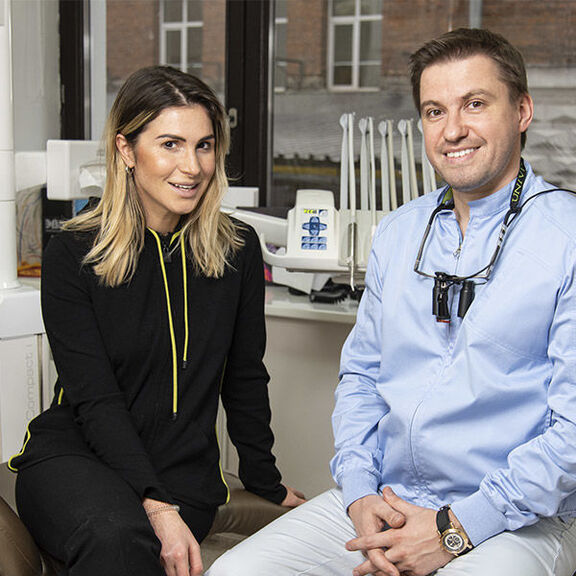













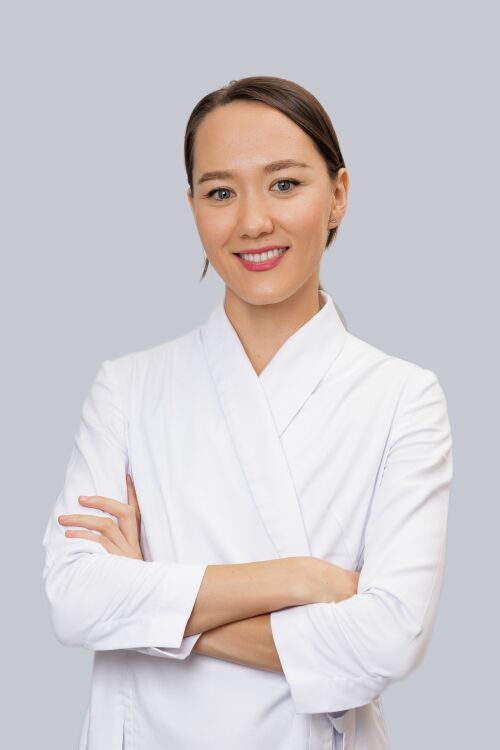








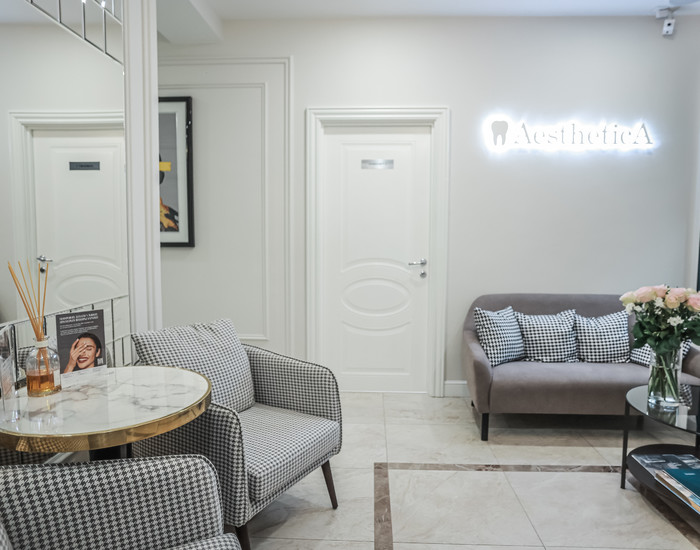
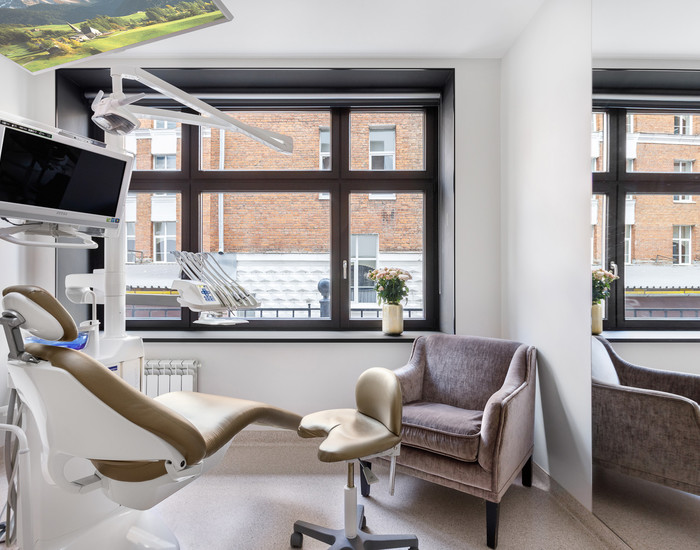


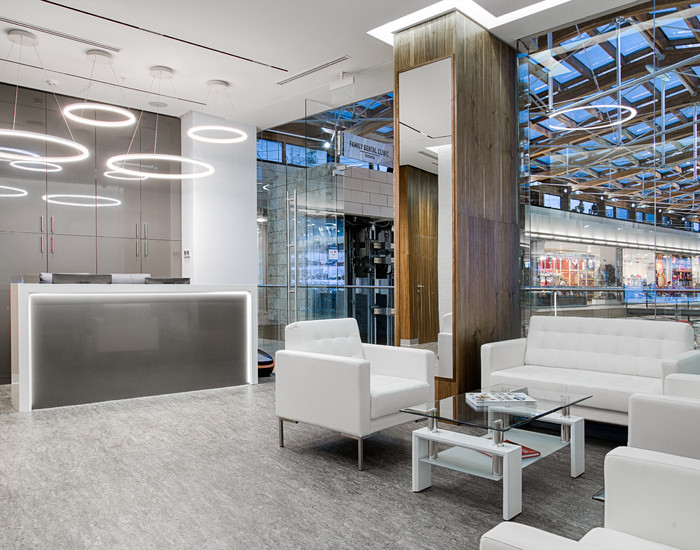

_700x550_ac7.jpg)






